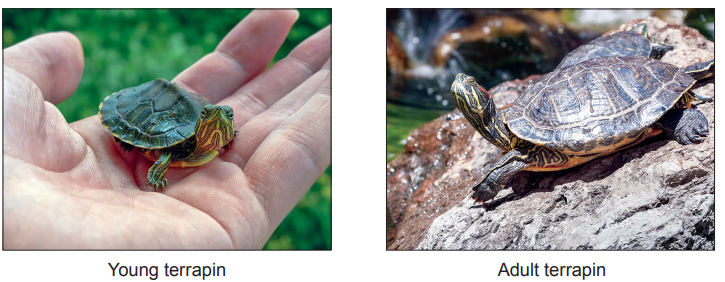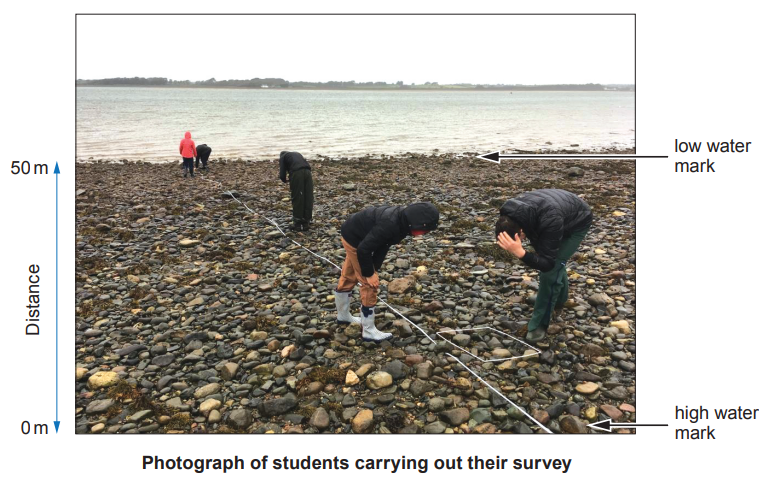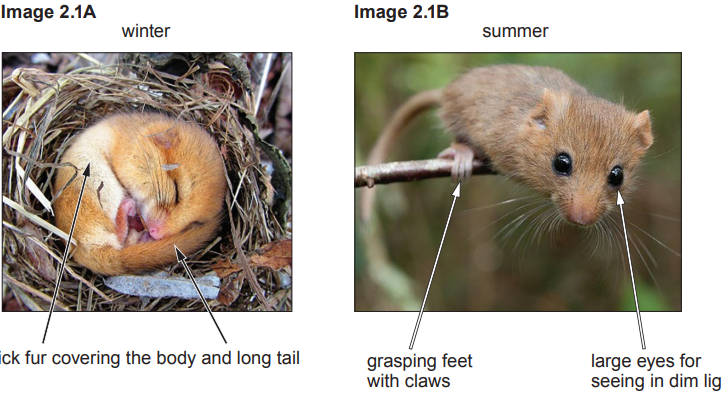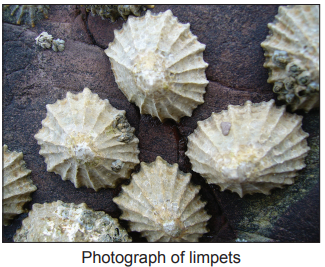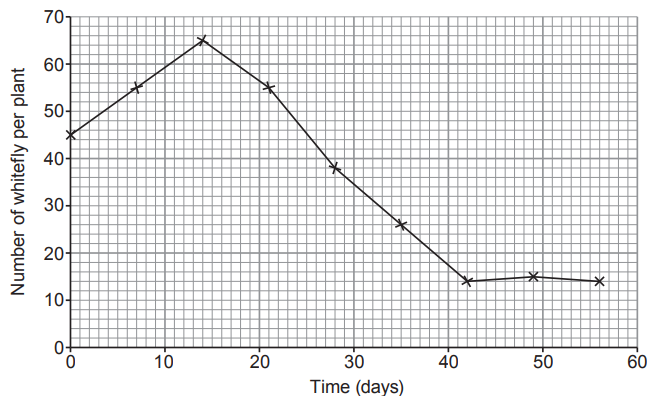Table 3.1 shows the classification of three species of badger.
Table 3.1
Species of badger | |||
Classification | European | Honey | Asian |
Kingdom | Animal | Animal | Animal |
Phylum | Vertebrate | Vertebrate | Vertebrate |
Class | Mammal | Mammal | Mammal |
Order | Carnivore | Carnivore | Carnivore |
Family | Mustelidae | Mustelidae | Mustelidae |
Genus | Meles | Mellivora | Meles |
Species | meles | capensis | leucurus |
(i) State the two species of badger that are most closely related.
Explain your answer.
[2]
(ii) Use Table 3.1 to state the scientific name of the honey badger.
[1]
(iii) State one reason why scientists use scientific names instead of common names for organisms.
[1]
(iv) The honey badger is a vertebrate. State what is meant by the term vertebrate.
[1]
Image 3.2 is a fact file about the honey badger.
Image 3.2
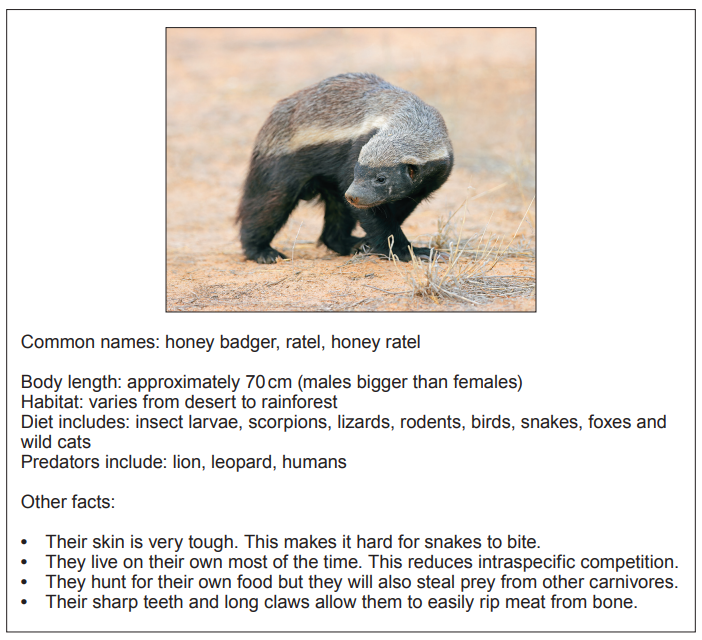
Use the information in Image 3.2 to describe two adaptations of the honey badger. Explain how each helps them survive.
Adaptation | How it helps them to survive |
............................................................ | ........................................................... |
............................................................ | ........................................................... |
Suggest what would happen to the number of honey badgers if the number of lions increased. Explain your answer.
(i) State what is meant by intraspecific competition.
[1]
(ii) List three resources for which all animals compete.
[3]
...................................
...................................
...................................
Did this page help you?


